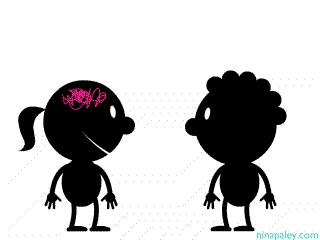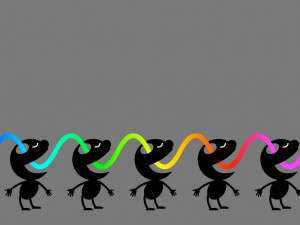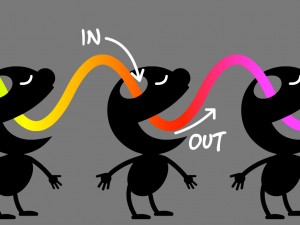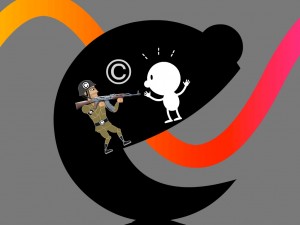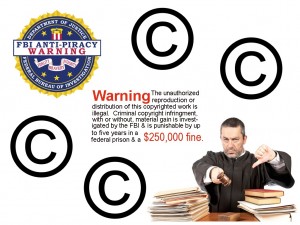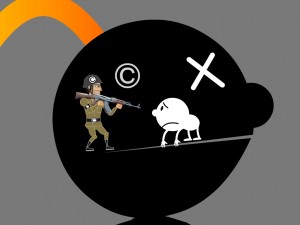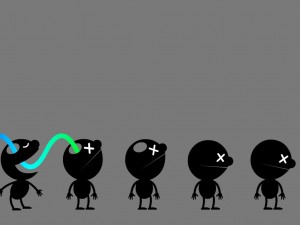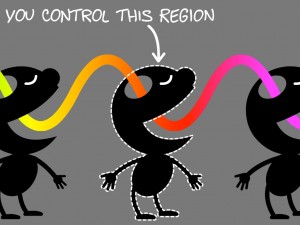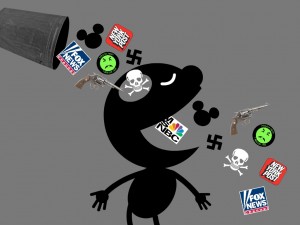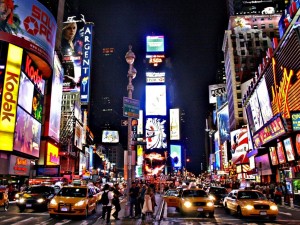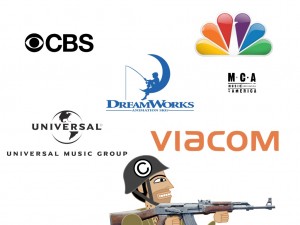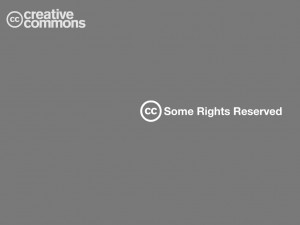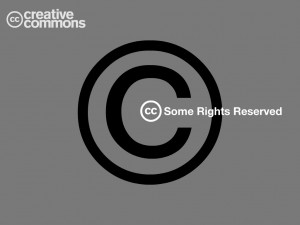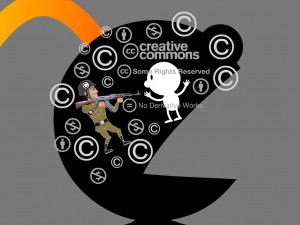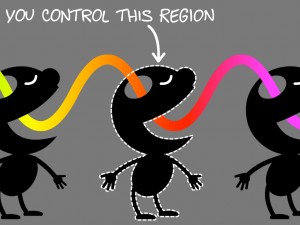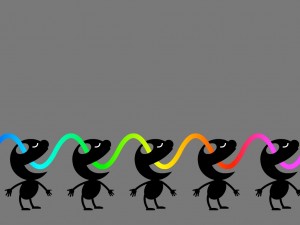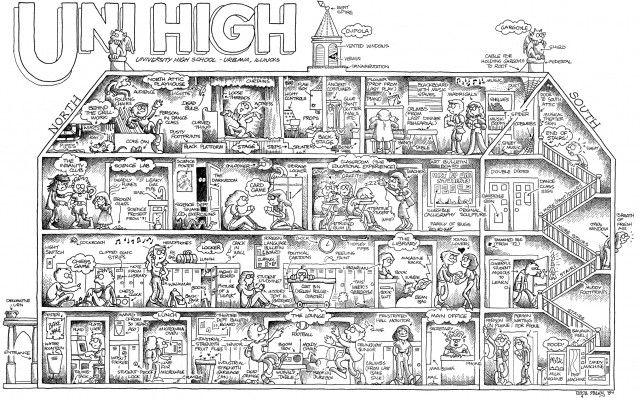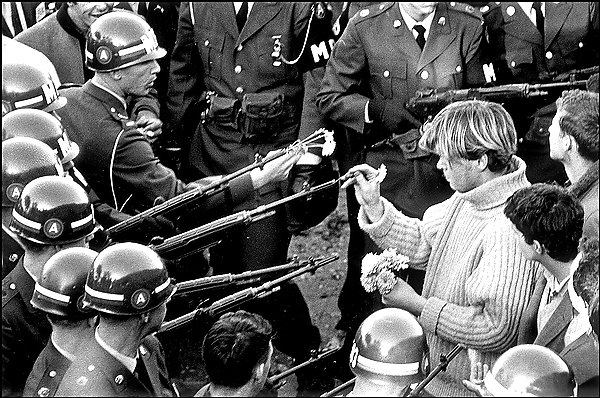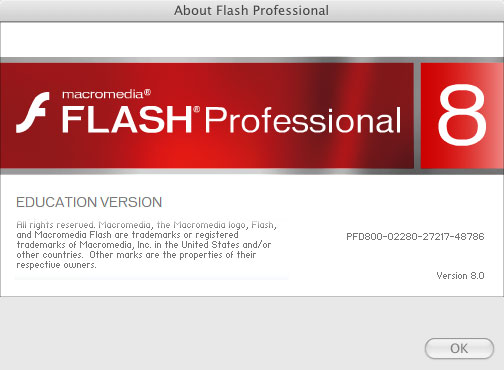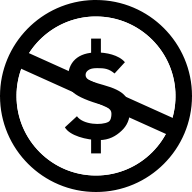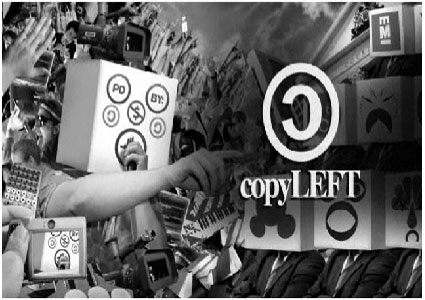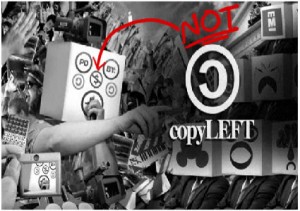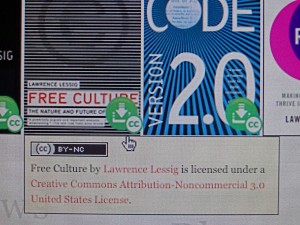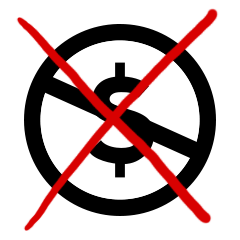Below are the images and text of a Pecha Kucha talk I gave in Champaign, IL. The Pecha Kucha format is 20 slides x 20 seconds per slide. Hopefully the video will be online within a few months Video embedded above.
You are an information portal. Information enters through your senses, like your ears and eyes, and exits through your expressions, like your voice, your drawing, your writing, and your movements.
In order for culture to stay alive, we have to be open, or permeable. According to Wikipedia, Permeance is “the degree to which a material admits a flow of matter or energy.” We are the material through which information flows.
It’s through this flow that culture stays alive and we stay connected to each other. Ideas flow in, and they flow out, of each of us. Ideas change a little as they go along; this is known as evolution, progress, or innovation.
But thanks to Copyright, we live in a world where some information goes in, but cannot legally come out.
Often I hear people engaged in creative pursuits ask, “Am I allowed to use this? I don’t want to get in trouble.”
In our Copyright regime, “trouble” may include lawsuits, huge fines, and even jail. “Trouble” means violence. “Trouble” has shut down many a creative enterprise. So the threat of “trouble” dictates our choices about what we express.
Copyright activates our internal censors. Internal censorship is the enemy of creativity; it halts expression before it can begin. The question, “am I allowed to use this?” indicates the asker has surrendered internal authority to lawyers, legislators, and corporations.
This phenomenon is called Permission Culture. Whenever we censor our expression, we close a little more and information flows a little less. The less information flows, the more it stagnates. This is known as chilling effects.
I have asked myself: did I ever consent to letting “Permission Culture” into my brain? Why am I complying with censorship? How much choice do I really have about what information goes in and comes out of me?
The answer is: I have some choice regarding what I expose myself to, and what I express, but not total control. I can choose whether to watch mainstream media, for example. And I can choose what information to pass along.
But to be in the world, and to be open, means all kinds of things can and do get in that are beyond my control. I don’t get to choose what goes in based on its copyright status. In fact proprietary images and sounds are the most aggressively rammed into our heads. For example:
“Have a holly jolly Christmas, It’s the best time of the year
“I don’t know if there’ll be snow, but have a cup of cheer
“Have a holly jolly Christmas, And when you walk down the street
“Say hello to friends you know and everyone you meet!”
I hate Christmas music. But because I live in the U.S., and need to leave the house even in the months of November and December, I can’t NOT hear it. It goes right through my earholes and into my brain, where it plays over and over ad nauseum.
Here are some of the corporations I could “get in trouble with” for sharing that song and clip in public. I wasn’t consulted by them before having their so-called “intellectual property” blasted into my head as a child, so I didn’t ask their permission to put it in my slide show.
Copyright is automatic and there’s no way to opt out. But you can add a license granting some of the permissions copyright automatically takes away. Creative Commons, the most widespread brand of license, allows its users to lift various restrictions of copyright one at a time.
The problem with licenses is that they’re based on copyright law. The same threat of violence behind copyright is behind alternative licenses too. Licenses actually reinforce the mechanism of copyright. Everyone still needs to seek permission – it’s just that they get it a little more often.
Like copyright itself, licenses are often too complex for most people to understand. So licenses have the unfortunate effect of encouraging people to pay even MORE attention to copyright, which gives even more authority to that inner censor. And who let that censor into our heads in the first place?
Although I use Free licenses and would appreciate meaningful copyright reform, licenses and laws aren’t the solution. The solution is more and more people just ignoring copyright altogether. I want to be one of those people.
A few years ago I declared sovereignty over my own head. Freedom of Speech begins at home. Censorship and “trouble” still exist outside my head, and that’s where they’ll stay – OUTSIDE my head. I’m not going to assist bad laws and media corporations by setting up an outpost for them in my own mind.
I no longer favor or reject works based on their copyright status. Ideas aren’t good or bad because of what licenses people slap on them. I just relate to the ideas themselves now, not the laws surrounding them. And I try to express myself the same way.
Like millions of others who don’t give a rat’s ass about copyright, I hope you join me. Make Art, Not Law.

